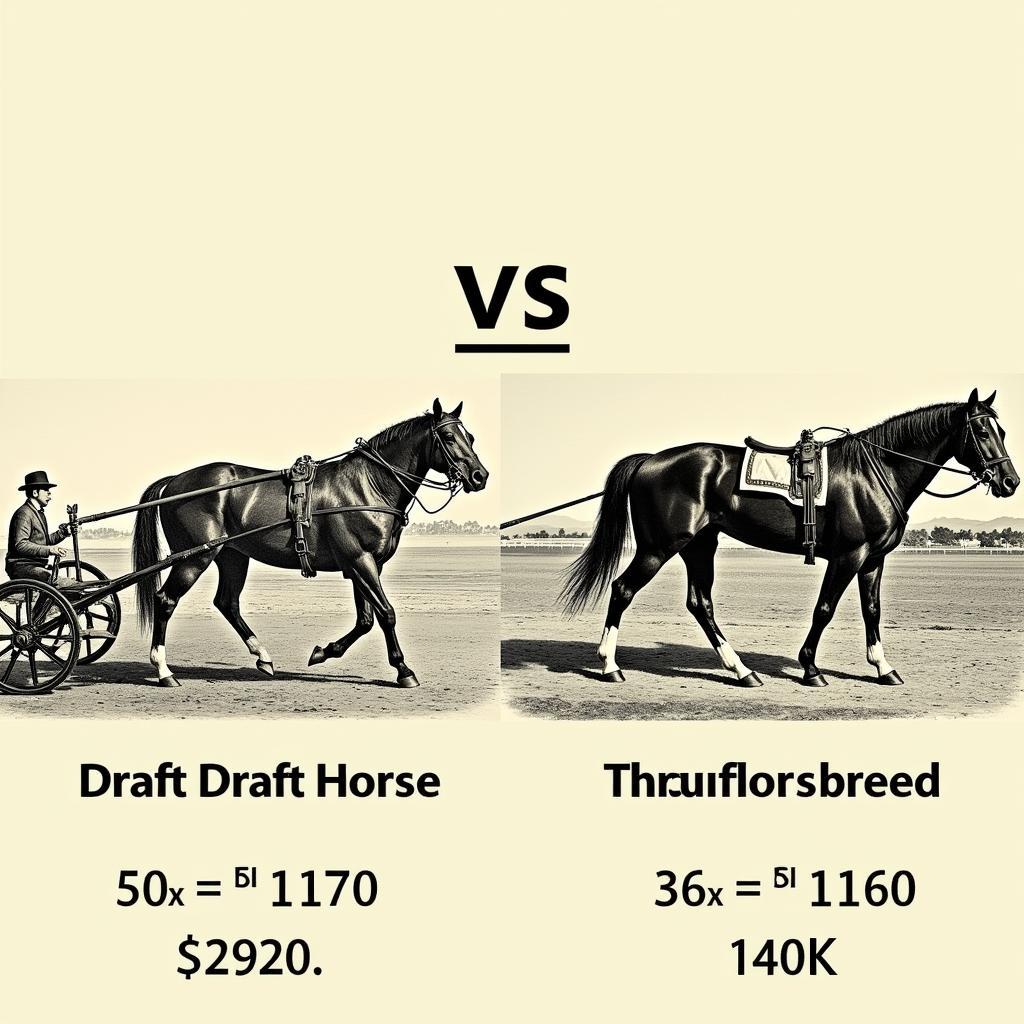In 1880, the cost of a horse varied significantly, much like today. Factors influencing the price included breed, age, training, and overall condition. Understanding the economic landscape of the late 19th century provides valuable context for “How Much Did A Horse Cost In 1880?”.
Decoding the Price of a Horse in 1880
Several factors contributed to the fluctuating price of horses in 1880. A common workhorse might cost between $50 and $150, while a well-bred riding horse or a horse trained for specific tasks, such as driving or racing, could fetch upwards of $200 or even more. The equivalent buying power today would be significantly higher, making a seemingly modest $100 a substantial investment. Imagine saving up for months, perhaps even years, for a reliable work animal crucial to your livelihood.
Breed, Age, and Training: Key Price Determinants
Breed played a significant role in a horse’s value. Draft horses, known for their strength and size, were essential for farming and heavy hauling, impacting their market value. Thoroughbreds, prized for their speed and agility, commanded higher prices due to their racing potential. Similarly, a young, well-trained horse would be worth considerably more than an older, untrained animal. Training a horse for specific disciplines, like dressage or carriage driving, added to its value.
 Horse Prices in 1880: Draft vs. Thoroughbred
Horse Prices in 1880: Draft vs. Thoroughbred
The condition of a horse also heavily influenced its price. A healthy, sound horse was naturally more valuable than one with health issues or injuries. Furthermore, the location also played a role. Horses in urban areas or regions with high demand often commanded higher prices compared to those in rural locations with ample supply.
The Economic Context of 1880
The economic landscape of the late 19th century provided a backdrop for horse prices. This era saw significant agricultural development and westward expansion, increasing the demand for horses for both farming and transportation. The relative scarcity of motorized vehicles meant horses were essential for everyday life, influencing their price.
What Did a Good Horse Cost in 1880?
A “good” horse in 1880, implying good health, training, and breed suitable for a specific purpose, could cost anywhere from $150 to $500 or more. This would be a substantial investment, representing a significant portion of a family’s annual income. Think of it as purchasing a reliable vehicle today – a necessary expense for work and daily life.
Comparing Horse Prices Then and Now
While a direct comparison is complex, it’s clear that the relative cost of a horse in 1880 was much higher than today. Horses were indispensable, a crucial component of the economy, and their price reflected this vital role. Imagine a world without cars, trucks, or tractors. The horse was the engine of society.
Conclusion
So, how much did a horse cost in 1880? The answer, as we’ve explored, is multifaceted. Factors like breed, age, training, condition, and the economic context all played a role. While a simple figure is elusive, understanding these influences allows us to appreciate the true value of a horse in the late 19th century. Just as today, a horse was more than just an animal; it represented an investment, a partner, and a vital part of life. Remember, for questions and assistance, reach out to us at Justus Horses USA. Call us at 0772127271, email [email protected], or visit our location at QGM2+WX2, Vị Trung, Vị Thuỷ, Hậu Giang, Việt Nam. Our team is available 24/7.
FAQ
- What was the average cost of a workhorse in 1880?
- How did breed affect the price of a horse in 1880?
- Why were horses so expensive in 1880 compared to today?
- What was the most expensive breed of horse in 1880?
- Where could you buy a horse in 1880?
- How does the cost of a horse in 1880 compare to the cost of a car today?
- Were there financing options for buying a horse in 1880?
You might also be interested in these other articles on our website: “The History of Horse Breeding in the United States” and “The Role of Horses in 19th Century Agriculture”. We encourage you to explore our resources and learn more about the fascinating world of horses.